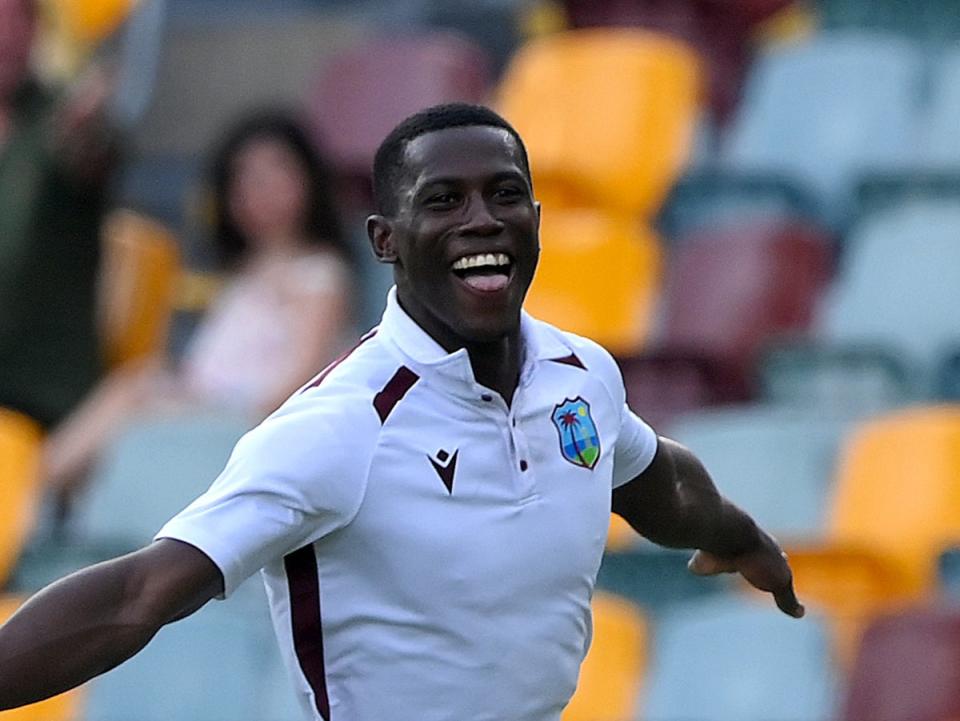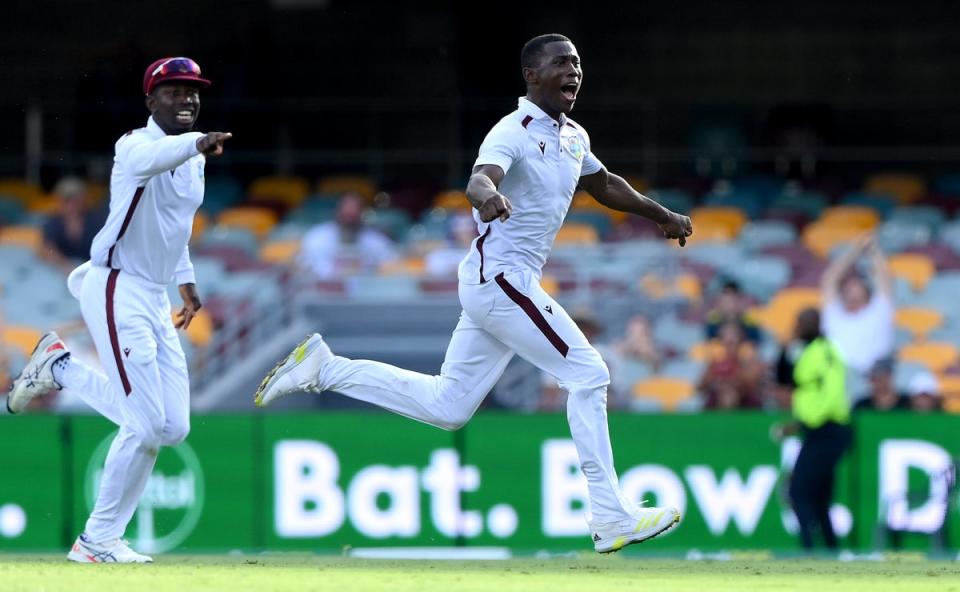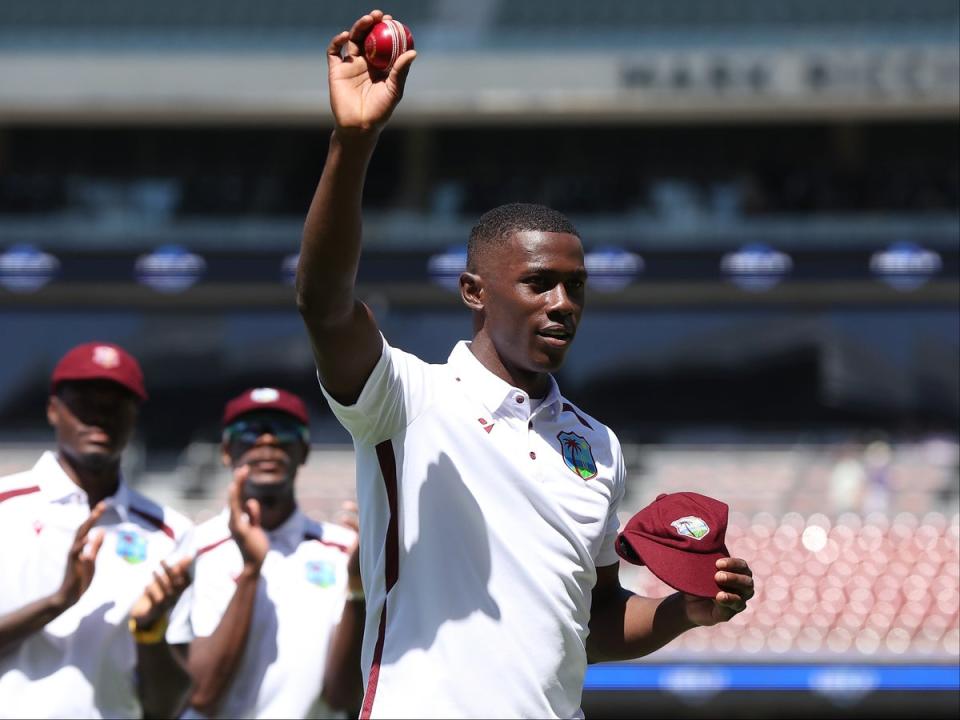Shamar Joseph arrives on IPL stage as proof that Test cricket still matters most

Last month, Shamar Joseph took a call that changed his life. You will have heard the story of the Guyanese kid who left a life of logging or security shifts behind to chase his cricket dream. In January, a most fanciful fantasy was fulfilled, Joseph ripping through an Australian batting line-up of some repute to secure the West Indies victory in Brisbane for the first time since 1997.
The Baracara boy had come good. And yet it says a lot about the modern cricketing landscape that in the moments after watching the West Indies unearth another fast-bowling gem, former seamer Ian Bishop was worried. Worried that the Windies would soon be losing his rare talents, and worried for Joseph, too, with the riches and rigours about to come his way.
“[It is] important for the board, Guyana government and cooperate bodies to find a way to allocate funds to compensate Shamar Joseph and one or two other fast bowlers to keep them in the Caribbean and control how much cricket they play,” Bishop posted on X/Twitter. “Their pace is everything. Don’t allow burnout.”
Bishop knew what was coming – in February, Mark Wood was withdrawn from his contract with the Lucknow Super Giants in the Indian Premier League (IPL), leaving them to seek a high pace replacement. Joseph, his international career not yet a month old, was identified and recruited. In a seam attack short of an established international option, there’s every chance that the 24-year-old’s third professional T20 outing is Lucknow’s opener against the Rajasthan Royals on Sunday.
Deals elsewhere will follow. Joseph’s pure pace, as Bishop noted, will make him a highly valuable commodity. One could, if so inclined, chart a course through a year in franchise cricket that begins in Australia with the Big Bash in January, following through into the SA20 or ILT20, on to the PSL and IPL and through into The Hundred or Major League Cricket. Reports suggest the IPL are in negotiations with the Saudi Public Investment Fund (PIF) – yes, them – over an autumn version of their commercial behemoth. Welcome to the T20 treadmill, Shamar – good luck getting off.
Picking and choosing the leagues in which one features are the key decisions that the modern cricketer must make. Increasingly, there is pressure from IPL franchises to play for their sister sides in other leagues around the world – a Kolkata Knight Riders player could feature in four different competitions in 2024 all wearing a single badge on their chest.
The Independent knows of one leading cricketer who turned down an offer to feature in the SA20 earlier this year in order to ensure they retained their national central contract in their country given the year-long perks it offers – but if, as most expect, 12-month franchise contracts are soon put on the table, plenty will be tempted to sign.

Some have already made the perfectly valid choice to prioritise the shortest format. Trent Boult has not featured in a Test for New Zealand since relinquishing his national contract in August 2022, but will spearhead the Rajasthan Royals seam attack again as one of the most sought-after left-arm, new-ball bowlers in the world. Nicholas Pooran might be the purest batter the West Indies have produced in the last 10 years but has played all of five first-class games.
The proliferation of T20 leagues is not necessarily a bad thing. The opportunities on offer provide jobs for greater numbers of players each year, sustaining the breadth and depth of the sport. There are more professional cricketers now than ever before, including within the women’s game, where franchise leagues are accelerating the rate of change.
The IPL, for all of the glitz and glamour, can be a place for the unlikely hero. It was here, of course, that an Afghan teenager called Rashid Khan learned the tricks that made him the foremost international man of mystery. Or what about the tale of Pravin Tambe, proof that life begins at 40 having picked up an IPL gig after toiling away in obscurity for two decades.
Joseph himself is not yet your ordinary T20 success story, his two appearances for the Guyana Amazon Warriors in last year’s Caribbean Premier League did not feature a single wicket.
Joseph’s journey is therefore a reminder of the platform Test cricket can provide. While T20 cricket is exceptionally data-driven, some franchises appear to still place significant value on pressure-game performances – a breakthrough World Cup, like the one enjoyed by Rachin Ravindra last year, or impressive Test series, as Sam Curran produced against India in 2018 before earning a major deal, still count for something.
Yet these chances are not always on offer. Wanindu Hasaranga, the brilliant Sri Lanka leggie, reversed his red-ball retirement last week having missed precisely one Test in the seven months since making the decision to step away. Litton Das, one of Bangladesh’s best T20 batters, is 39 Tests into his career but yet to play in England or Australia. Ireland’s Josh Little was “rested” for the encounter with England at Lord’s last summer after his IPL exertions.

In a crowded calendar, it is surely incumbent upon bigger boards to work together to provide fixtures that sustain and enrich the longest format. But while the overall pot of money has grown, franchise owners can be reluctant to share their wealth – something that the ECB will be acutely aware of as it courts private investment into The Hundred.
Strangely, it might be India leading the way on this front. Ishan Kishan and Shreyas Iyer were recently disciplined after ignoring the BCCI’s instruction to play in domestic red-ball cricket, the pair instead prioritising preparation for the IPL. While the next two months will see the unearthing of yet more domestic stars, it is only once they have proved themselves in the Ranji Trophy and with India A that they will be promoted into the Test set-up. It is a model more could follow.
“I will always be here to play Test cricket for the West Indies," Joseph said at the Gabba in January. "There will be times when T20 might come around and Test cricket will be there … but I will always be available to play for the West Indies no matter how much money comes towards me."
It is on the game’s administrators to make sure Joseph fulfils that vow.

